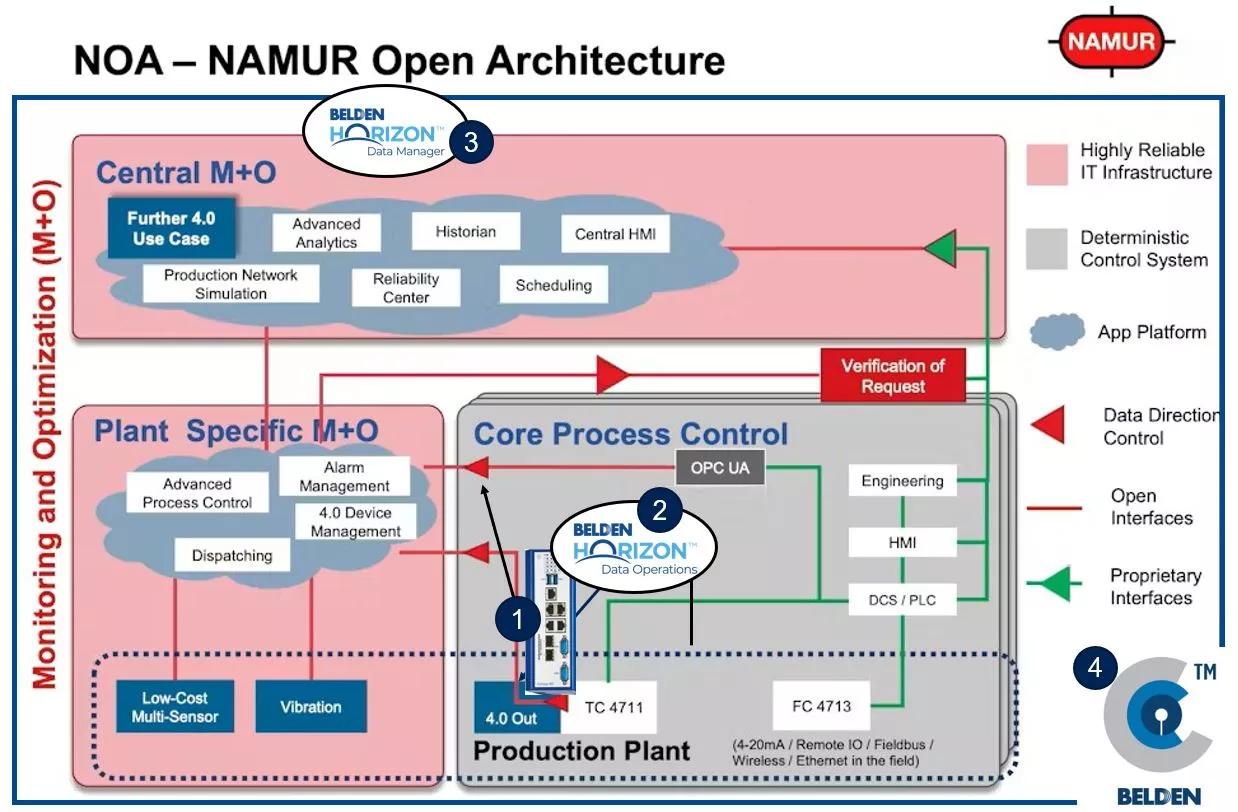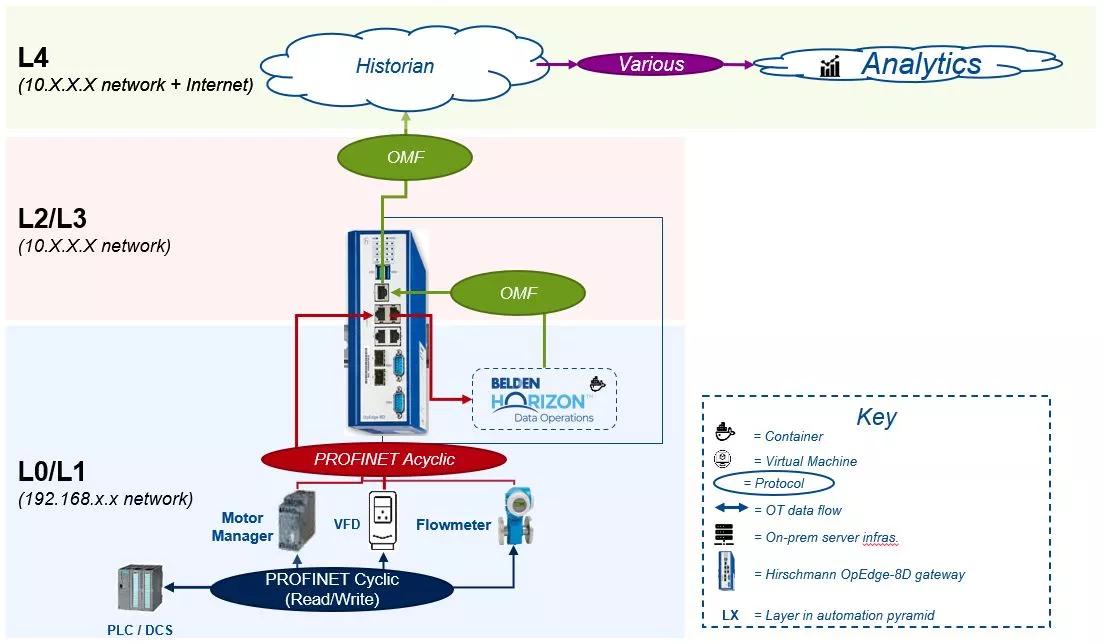What You Need to Know About NAMUR Open Architecture
Easy and secure access to production data is key for plant and asset optimization. Making this information accessible and actionable drives efficiency improvements, quality control advancements and cost reductions.
NAMUR, the User Association of Automation Technology in Process Industries, is helping the process automation industry improve access to production data. As an organization made up of users and manufacturers in process automation, it’s also the creator of NAMUR Open Architecture (NOA).
This initiative aims to standardize and open the architecture of process control systems in chemical processing and related industries. NOA promotes interoperable solutions in industrial automation and process control.
5 Reasons Process Manufacturers Adopt NOA
Why should the process automation industry consider adopting systems following the NOA concept? There are five drivers that make NAMUR Open Architecture an attractive option.
1. Interoperability
NOA promotes communication between equipment and software from different vendors, enabling them to work together efficiently. This helps build more flexible and adaptable control systems. When equipment and software are interoperable, you can pick and choose the products you want to use within the modular architecture system and have confidence that they’ll work together.
2. Vendor Neutrality
NOA prevents you from being locked in to one vendor’s ecosystem. This gives you the freedom to choose the best components or systems for your needs, with no restrictions created by proprietary technologies. Vendor agnosticism can also potentially reduce costs since competition amongst vendors often drives down prices as customers decide which components to choose from different suppliers.
3. Futureproofing
As technology evolves, NOA helps futureproof your automation systems. You can easily integrate new technologies and components into your infrastructure as they become available without having to replace your entire system.
4. Security
Promoting the use of open standards and best practices for cybersecurity, NOA enhances the security of industrial control systems. It facilitates the creation of more resilient, secure systems to protect critical infrastructure.
5. Community Collaboration
NOA encourages industry collaboration. Users, vendors and standards organizations can work together to define and improve open standards and best practices, leading to better solutions and outcomes for everyone.
Understanding Data Flows with NOA
Manufacturers and industrial organizations are choosing to adopt the principles of NOA to gain more flexibility, reduce costs and ensure that their systems remain adaptable and secure amid technological advancements.
NAMUR Open Architecture is a forward-looking approach that aligns with the evolving needs of the industry.
In the diagram above, we see two data flows:
1. From the DCS/PLC via proprietary interfaces, noted with the green arrow.
2. From maintenance and operations systems via open interfaces, noted with the red arrow. These systems are less time-critical.
In this architecture, within the data flowing from maintenance and operations systems are two flow subtypes:
2A. From the existing process control system, represented by the two blue arrows in the gray box.
2B. From new bolt-on sensors, represented by the two blue arrows in the red box.
Data flow from maintenance and operations systems is where Belden’s edge solution comes into play. Our industrial edge solution helps you realize the flow of data through your plant-specific maintenance and operations path.
In the diagram below, we take a deeper dive into our solution architecture as it relates to 2A (the data from existing process control systems), which is comprised of four components, noted in blue circles.
Belden’s Role in NAMUR Open Architecture
Let’s take a closer look at the four components of Belden’s industrial edge solution and how they can help you realize NOA.
1. OpEdge Hardware
The OpEdge family of edge devices, including the OpEdge-8D, provides reliable computing infrastructure to run applications at the network edge, helping you manage an excess of available data and transform local data into useful insights.
These ruggedized edge compute devices are purpose-built for securely traversing multiple networks in industrial environments. They feature built-in edge runtime to support containers, virtual machines and remote edge application orchestration and management.
2. Belden Horizon Data Operations
Belden Horizon Data Operations (BHDO) is a software tool that enables data collection and contextualization at the network edge, empowering greater data insights and analysis. Supporting more than 275 protocols, BHDO helps you realize NOA by:
- Gathering data without disrupting control systems
- Aggregating data from all levels of operations (switches, firewalls, I/O blocks and more)
- Supporting OPC UA protocol
3. Belden Horizon Data Manager
Working in tandem with Belden Horizon Data Operations, Belden Horizon Data Manager (BHDM) works to manage BHDO deployment. It helps your plant realize NOA by:
- Centralizing management and orchestration in line with NOA compliance expectations
- Scaling across multiple cells or plants within an organization
- Seamlessly updating across multiple deployments
4. Our Services and Customer Innovation Centers
Belden has five Customer Innovation Centers (CICs) located all over the world, from Chicago to China, where we collaborate with our customers to solve their unique business problems. Our CICs are where we help you build the foundation for operational efficiency by leveraging your real-time data.
Inside these innovation hubs, you’ll find:
- Integrated product and solution demos, where our experts show and explain our products first-hand. You’ll have an inside look at how our systems and components operate.
- Proof of Concept (POC) Labs, where your ideas come to life as we co-create solutions that our experts test to evaluate the potential they hold in real-world scenarios.
- Validation Labs, where our in-house experts validate our designs and data solutions and verify that they’ll work in your network before they’re deployed onsite.
- Testing services, where our experts conduct time-consuming internal testing for you to accelerate time to development and time to deployment so we can improve your network performance faster.
An NOA Case Study
Belden is already working with customers to help them adopt NOA principles.
To support a company-wide digital transformation and gain insights from data, a global food industry manufacturer needed help extracting OT data from its siloed assets.
Working in partnership with AVEVA and OSIsoft, we helped the manufacturer successfully design a network/data ingestion architecture that securely collects the necessary data from OT assets in an NOA-compliant fashion, in parallel with the existing process control network.
This initiative included the creation of programs that are part of the broader NOA vision. The customer’s NOA-compliant architecture, powered by Belden’s industrial edge solution, allowed them to securely collect new OT data without disrupting their existing control systems.
The captured data provided the foundation for various data systems that support the company’s digital transformation initiatives, including:
- Advanced analytics
- Artificial intelligence
- DataOps
- Digital twins
- Predictive and conditional maintenance
Learn more about Belden’s industrial edge solutions.



